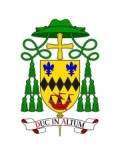Our Archdiocese
- Archbishop
- Bishop
- Vicar General & Episcopal Vicars
- Statistical Overview
- Boundaries of Archdiocese
- Organisational Structure
- Archdiocesan Assembly 2023-24
- Archdiocesan Plan 2016 - 2021
- History
- Coat of Arms
- Fifth Plenary Council of Australia
- Cathedral
- COVID-19 Position Statement
- Modern Slavery Statement
- Connect With Us

12th Sunday in Ordinary Time (Year B)
Installation of Parish Priest
Homily
By the Most Rev Bishop Don Sproxton
Auxiliary Bishop of Perth
St Anthony’s Church, Wanneroo Parish
Sunday 20 June, 2021
Download the full text in PDF
Following the ceremonies for the installation of parish priests, I often hear from parishioners that they were very impressed by the celebration, firstly because it might have been the first time they had seen one, and secondly that it was moving to see their new parish priest binding himself to their parish community.
The newly appointed parish priest has the option to meet with the bishop and make his Profession of Faith before him at our office, or to ask for the installation to be celebrated with the people as we are doing today. This probably explains why the ceremony has not be seen by some.
The appointment of a parish priest is very important to a community as it provides a parish with a leader in pastoral care. The people of a parish are called to respond to the needs of those both in their community and beyond, so the priest has a role in leading and coordinating this pastoral mission.
The parish has had a very long history in the Church. It really extends back to the beginning of the Church. Originally, the word ‘parish’ meant the community of the pilgrim people of God who make their way towards their true homeland with the Father. It was a Christian community, gathered by a pastor, a shepherd, who was the Elder or bishop. The parish was the equivalent of the diocese, as we call the local church today.
As the Church grew, more communities developed in other towns and villages near to first community and presbyters were sent to them by the bishop to shepherd them. In this way the diocese became a community of communities as parish after parish was added.
The parish was defined, eventually, as a territory within the diocese that has a Catholic population, a place to gather, and a proper pastor who was responsible for the care of souls. These were ways of describing the institution of the parish.
The Second Vatican Council helped us to understand that the parish is something more when it taught about the “Communio” that marks our Christian communities. This highlights the relationships within each community and with the other parishes. The purpose of the parish is to build up the Body of Christ in each community, and to find ways to work together with other parishes so that the pastoral mission of the diocese is unified and effective.
Fr Peter Porteous with the assistance of Fr Leonard, will serve this parish which is so special to the Servites. The return of the Servites to St Anthony’s has been welcomed by the parishioners many of whom have experienced the care of the Order since they arrived in Western Australia. Fr Peter and Fr Leonard will offer pastoral care to the people of Wanneroo, through their ministries of teaching, sanctifying and the service of leadership.
Above all, though, they will be examples of discipleship and faith. Their daily experiences in service will help them learn more about Jesus, as the first disciples did. There will be times, like when the storm of mighty waves and wind threatened the disciples on the lake in today’s Gospel, when things are tough, and Fr Peter and Fr Leonard will ask in prayer “Who are you, Jesus?” and “Can I put my trust in you again?”
Their greatest service to the parish will be allowing the people to see them grow in faith, which will encourage their brothers and sisters in the parish to also put their faith in Jesus, the Son of God. Shortly, I will invite the Parish Pastoral Council to join us on the Sanctuary so that they may be presented to Fr Peter and witness his Profession of Faith. They will be his close collaborators in the pastoral ministry and planning for St Anthony’s, with Fr Leonard.
Please pray for Fr Peter, Fr Leonard and the Council for the service they offer this community.
